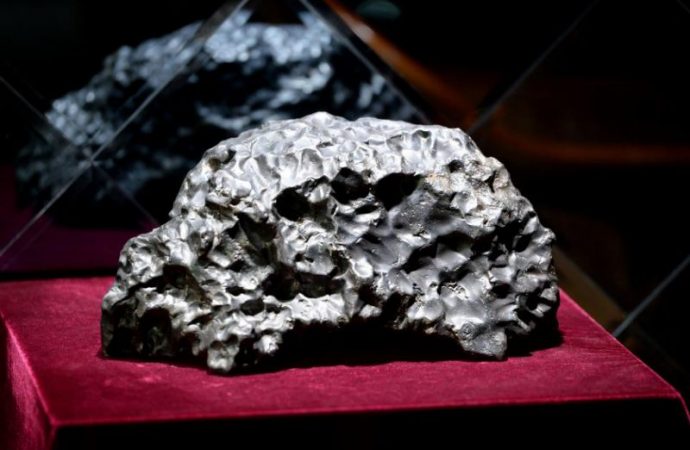How could people living during the Bronze Age pull off the difficult process of making iron?
They didn’t, concludes a new study, instead they got the iron for the rare, few iron artifacts discovered from the period in an easy-to-use form: meteorites hitting Earth.
The logic behind names of prehistoric periods is breathtakingly straightforward: During the Bronze Age, archaeologists find lots of artifacts made of bronze, but then, when the Iron Age begins, suddenly metal implements are made of iron instead. But there have always been a few exceptions, rare objects made of iron long before the Bronze Age faded. Archaeologists have been stumped by these objects because iron is much more difficult to process than bronze, and they didn’t think any Bronze Age civilizations had the skills needed to do so.
Albert Jambon, a mineralogist at the Pierre and Marie Curie University in France, tackles these weird early iron exceptions in a paper, published in the Journal of Archaeological Science. Jambon wanted to determine plausibility that there was some, as he describes it in the paper, “precocious smelting” of iron during the Bronze Age.

In order to turn iron from Earth’s surface into something usable, you have to be able to smelt it. That’s notoriously hard to do because you need particularly high temperatures and a series of persnickety steps. Prior to that point, bronze ruled the world, since it is technologically easier to produce.
So Jambon tracked down the early pieces of iron that popped up during the Bronze Age, when iron was more valuable than gold. Those included a Syrian ax made around 1400 BC and bracelets found in Poland from about 700 BC. He also compared his own results with previously tested objects, like a dagger blade found in the tomb of Egyptian pharaoh King Tut, which researchers last year identified as having come from a meteorite.
Then, he analyzed those items to see what kind of iron they were made of, using a device that can be brought to a museum to avoid moving the artifact. He looked at ratios of the elements iron, cobalt and nickel to evaluate the iron’s origins and found that everything before about 1200 BC seemed to come from meteorites. Iron from meteorites is much harder to track down than terrestrial iron, but it’s much easier to process. That means that while it was certainly a luxury item because of its rarity, it doesn’t represent a previously unknown technological advance.
Pre-smelting iron artifacts made from meteorites have been discovered around the world, including in Greenland, Eastern North America and Tibet.
Source: Yahoo News

































Leave a Comment
You must be logged in to post a comment.